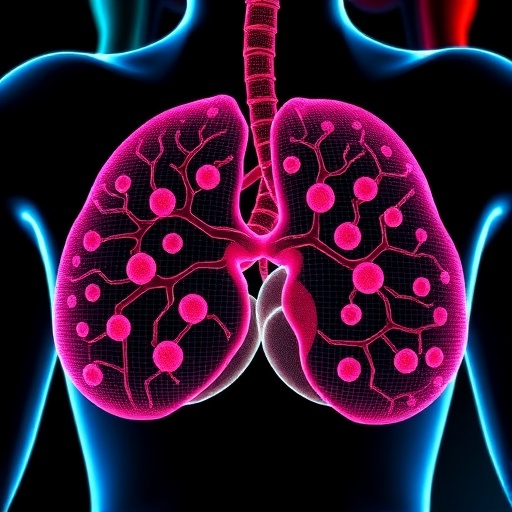Recent research conducted by Wang, Lu, Wu, and their colleagues has illuminated a significant link between predicted basal metabolic rate (BMR) and insulin resistance within the general population of China. This study, which will be published in the upcoming issue of BMC Endocrine Disorders, provides valuable insights into how fundamental metabolic functions can influence wider health outcomes, especially concerning metabolic disorders like Type 2 diabetes. The exploration of BMR and its correlation with insulin sensitivity unveils critical evidence that could reshape approaches to metabolic health.
The basal metabolic rate is the rate at which our bodies expend energy at rest to maintain essential physiological functions such as breathing, circulation, and cellular production. Understanding BMR is crucial because it accounts for the largest portion of an individual’s total energy expenditure. Therefore, any fluctuation in BMR could potentially have profound impacts on body weight regulation, energy balance, and overall metabolic health. This forthcoming study proposes a connection between BMR and insulin resistance, which has significant implications for public health considering the rise of metabolic diseases globally.
Insulin resistance is a metabolic state where the body’s cells become less responsive to insulin, leading to elevated blood sugar levels. This condition is often a precursor to Type 2 diabetes, cardiovascular diseases, and various metabolic dysfunctions. The World Health Organization has reported an alarming increase in these conditions, particularly in rapidly urbanizing countries. Thus, understanding the mechanisms by which BMR influences insulin action can be pivotal in developing preventative strategies against these health crises.
The research team utilized a cross-sectional study design to evaluate a diverse cohort from across China, ensuring the inclusivity of various demographics. Participants underwent rigorous assessments, including body composition analysis and blood sampling, to measure relevant variables comprehensively. By predicting the BMR of these individuals, researchers could then analyze how this metabolic rate interacted with markers of insulin resistance, such as fasting glucose levels and insulin sensitivity indices.
Findings from the study indicated that lower predicted BMRs were associated with higher levels of insulin resistance, underscoring the importance of metabolic maintenance in the prevention of diabetes. This correlation raises questions about how lifestyle factors, such as diet, physical activity, and sedentary behavior, could influence not only BMR but also the broader spectrum of insulin action and glucose metabolism.
Furthermore, the researchers considered various confounding factors, including age, sex, body mass index, and lifestyle habits, to isolate the effects of BMR on insulin resistance. The careful analysis controlled for potential biases and allowed for a more accurate interpretation of the data. This meticulous approach affirms the reliability of their conclusions, setting a standard for future research in metabolic health.
A key aspect of the research highlights the role of genetics and environmental factors in determining an individual’s BMR. Genetic predispositions can significantly influence metabolic rates, and understanding these heritable traits can provide insights into targeted interventions for those at high risk of developing insulin resistance. Such knowledge is essential not only for personalized medicine but also for broader public health initiatives to curb the rising epidemic of metabolic disorders.
Additionally, the implications of the findings extend beyond the individual level. Public health policies could benefit from this research by promoting awareness of the importance of maintaining an optimal metabolic rate through lifestyle choices. Encouraging regular physical activity and balanced nutrition could serve as cost-effective interventions to enhance BMRs across populations, ultimately lowering the risk of insulin resistance on a larger scale.
As the findings circulate in the scientific literature, one can anticipate discussions among healthcare providers about the integration of BMR assessments in routine check-ups. Screening for metabolic rates could become a standard component of health evaluations, especially for populations at risk of developing insulin resistance.
As the research community continues to unravel the complexities of metabolism and insulin dynamics, this study stands as a beacon of understanding that can forge new paths in addressing public health challenges associated with metabolic disorders. While more research is undoubtedly needed to explore the intricacies of these relationships, the foundational work laid out by Wang and colleagues is a step toward reshaping the narrative around metabolic health.
The implications of this study could ripple out to include various sectors – from clinical practices to policy-making and beyond. As healthcare systems look to incorporate preventative measures alongside treatment options, findings such as these will be integral in guiding those initiatives. The pressing need for effective strategies against metabolic diseases has never been more evident, and studies like these offer a much-needed glimpse into the potential pathways towards solutions.
In conclusion, Wang, Lu, and Wu’s research provides a crucial framework for understanding the interplay between predicted basal metabolic rate and insulin resistance among the Chinese population. Their findings serve as a call to action for both individuals and healthcare providers to prioritize metabolic health through informed lifestyle choices. This research promises to be a landmark study that propels forward our understanding of metabolism, offering hope for mitigating the burden of insulin resistance and its associated diseases.
As this pivotal research gains attention in the scientific community and beyond, it raises important questions and opens new avenues for discussion regarding the future of metabolic health and its implications for multiple generations to come.
Subject of Research: Association of predicted basal metabolic rate and insulin resistance in a Chinese general population
Article Title: Association of predicted basal metabolic rate and insulin resistance in a Chinese general population
Article References:
Wang, L., Lu, T., Wu, P. et al. Association of predicted basal metabolic rate and insulin resistance in a Chinese general population. BMC Endocr Disord 25, 156 (2025). https://doi.org/10.1186/s12902-025-01976-3
Image Credits: AI Generated
DOI: 10.1186/s12902-025-01976-3
Keywords: basal metabolic rate, insulin resistance, metabolic health, Type 2 diabetes, public health, metabolic disorders.
Tags: basal metabolic rate in Chinaenergy balance and metabolic functionsenergy expenditure and weight regulationimplications of BMR on metabolic diseasesinsulin sensitivity and public healthmetabolic disorders and health outcomesmetabolic health research in Chinese populationmetabolism and insulin resistance connectionpredictive models for insulin resistancepublic health strategies for metabolic disorderstype 2 diabetes risk factorsunderstanding insulin resistance mechanisms





